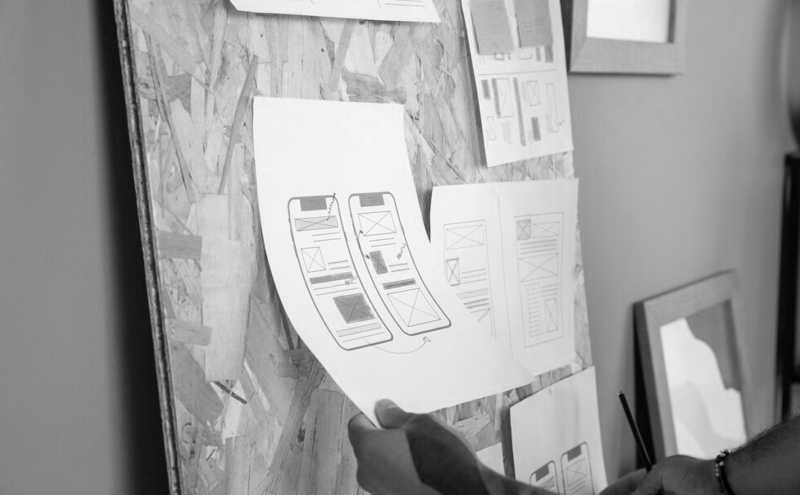UX Case Study - Web Application Design
Sub-agent Management Portal (B2B)
For a Global Payment Solutions Company
1. Project Overview
This sub-agent management system is a comprehensive web-based application designed to streamline the process of managing sub-agent profiles, ensuring compliance with country’s laws regarding the handling and storage of personal and business data for the Nationals. It provides a centralized platform for businesses to create, update, and organize business user and business data, facilitating seamless communication.
Role
Timeline
The UX phase of the project spanned four months, from initial research to the final UX deliverable.
2. Project Background
Business Objectives
- Develop an online sub-agent portal to comply with new Russian regulations by converting paper documents to digital formats, enhancing governance and accountability.
- Create a web-based application in Russian and English for onboarding, validating, and approving ABC external sub-agents to ensure compliance with the new regulations.
- Implement user authorization and access management to secure and manage access effectively.
End Users
- External: Sub-agents
- Internal: Admin and IT Team
3. Understanding the Business Goal, Problem, and Scope
Business Goal
Problem Statement
Scope
- Developing and maintaining a new sub-agent portal and enhancing network management online services for sub-agents.
- Upgrading interfaces between systems, implementing data encryption, developing new web services, and implementing Digital Signature functionality.
- Automating sub-agent approval processes and ensuring compliance with regulatory requirements.
3. UX Process Timeline
1-2
Research, Design Tkinking Workshop and Analysis
3-5
6-8
9-10
Final Design and Handoff to UI development team
4. Research and Analysis

User Interviews
Conducted in-depth interviews sessions with sub-agent and internal team to gain qualitative insights.
- Pain Points and Challenges: Users reported that the existing sub-agent management system were cumbersome and time-consuming, often leading to errors and inefficiencies in managing their business profiles.
- Desired Features and Improvements: Users expressed a strong desire for an intuitive interface with clear navigation and streamlined workflows to reduce the time spent on profile management tasks.

Competitive Analysis
- Usability Testing: Tested existing profile management system to identify common issues.
- Competitive Analysis: Analyzed top competitors to identify gaps and opportunities.
5. Design Thinking (DT) Workshop
Study Outcomes and Key Insights Shaping the Definition of Design Goals
Understanding
Persona definition: Created detailed profiles representing different user types based on research and data. Persona refinement: Refine personas through iterative feedback and additional research to ensure accuracy. Persona prioritization: Identify and prioritize key personas that are most critical for the design process.

Define
Pain Points and Areas of Opportunity Defined: Pain points and areas for improvement have been identified and defined thorough research and analysis, providing a clear understanding of the problem space.

Explore
- Collaboratively Ideated Solutions: Engaged in a collaborative process to generate a wide range of potential solutions, leveraging diverse perspectives and creativity.
- Prioritized Ideas: Evaluated and prioritized ideas based on criteria such as feasibility, impact, and alignment with user needs and business goals.

Build
Prototyped Solutions: Created prototypes to visualize and test potential solutions, allowing for iteration and refinement based on feedback.

Review
Review and Decide: Conducted thorough reviews of prototypes with stakeholders and users, making informed decisions to move forward with the most viable solution.

6. Design and Deliverables
User Tasks
User Task

User Flow
User Flow

Prototype
Delivered a clickable prototype, showcasing the proposed user interface and interactions. This prototype allowed stakeholders to interact with the design and provided a clear vision for the final product.
Personas
Developed a detailed persona, representing the target user group of external sub-agents and internal IT and admin. This personas included key demographics, behavior patterns, goals, and pain points, helping to align the design with user needs.
Persona

Competitive Benchmarking
Analyzed industry-leading profile management web applications to identify key features, user experience practices, and performance metrics. This process enabled us to refine our B2B application by incorporating best-in-class functionalities and ensuring a competitive edge.
competitive Benchmarking

Information Architecture
Information Architecture

Wireframes
7. Handoff to Development
Design System
Delivered a comprehensive design system, ensuring consistency, accessibility, and simplicity across all user interfaces. This system included a cohesive color palette, typography guidelines, reusable UI components, and clear design principles, significantly enhancing user experience and operational efficiency for the users.
Visual Mockups
8. Results and Impact
Business Benefits
- For external sub-agents: Converting KYA documents to an online format simplifies and speeds up form completion, reduces errors with step-by-step guidance, and allows saving drafts. sub Agents can also check their approval status anytime.
- The automated workflow and maker-checker process reduce errors in sub agent approvals. It facilitates easy validation, approval, and feedback, with accessible comments and history for each profile.
Metrics and KPIs
Post-implementation, the sub-agent web portal saw a 40% reduction in task completion time. User satisfaction scores improved by 50%, reflecting a more intuitive and efficient user experience.
* Data Collected through usability testing, surveys and feedback forms to gather user satisfaction scores.
9. Lessons Learned
Key Takeaways
- User-centered design is essential for driving business success.
- Thorough user research and iterative design processes lead to superior outcomes.
- Cross-functional team collaboration ensures designs meet and exceed user expectations, resulting in significant business gains.
Challenges
- Managing inconsistency and frequent shifts in business requirements.
- Shifting both current and new agents from a paper-based system to a new online application system.
- Converting hundreds of paper form fields into a user-friendly online application.
10. Conclusion
Final Thoughts
The project successfully met its objectives by delivering a sub-agent management web portal that enhanced productivity and team collaboration. The structured UX process, from understanding business goals to post-launch evaluation, ensured a well-rounded and effective design solution.
11. Appendices
Additional Documentation
Supplementary materials, detailed reports.
12. Acknowledgments
Following individual and team’s invaluable contributions to this project
- Business Analyst: For providing detailed requirements and ensuring alignment with business objectives.
- Front End Development Team: For their dedication and skill in bringing the design to life with seamless implementation.
